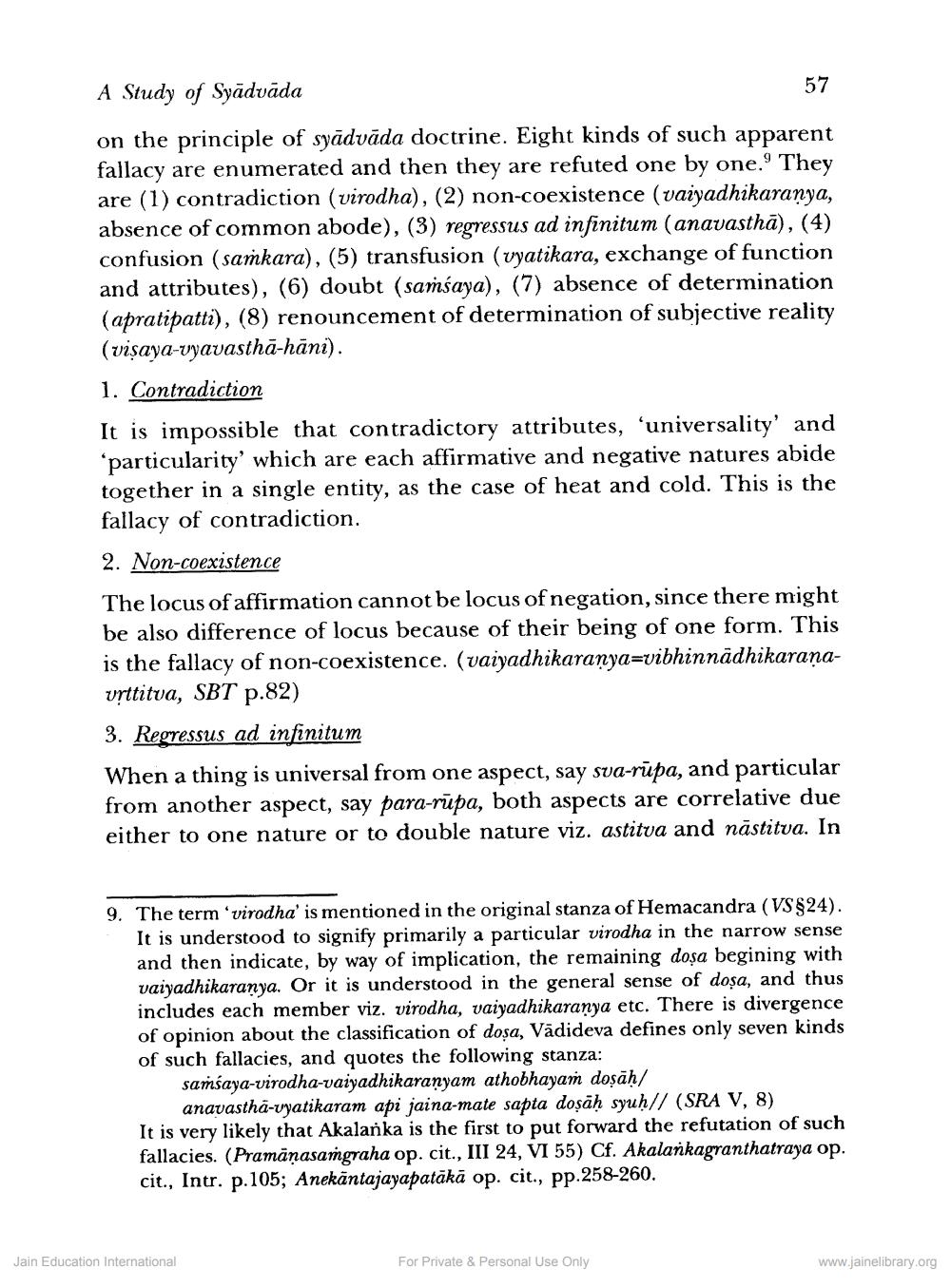________________
A Study of Syāduāda
57
on the principle of syādvāda doctrine. Eight kinds of such apparent fallacy are enumerated and then they are refuted one by one. They are (1) contradiction (virodha), (2) non-coexistence (vaiyadhikaranya, absence of common abode), (3) regressus ad infinitum (anavasthā), (4) confusion (samkara), (5) transfusion (vyatikara, exchange of function and attributes), (6) doubt (samsaya), (7) absence of determination (apratipatti), (8) renouncement of determination of subjective reality (visaya-vyavasthā-hāni). 1. Contradiction It is impossible that contradictory attributes, 'universality' and
particularity' which are each affirmative and negative natures abide together in a single entity, as the case of heat and cold. This is the fallacy of contradiction.
2. Non-coexistence
The locus of affirmation cannot be locus of negation, since there might be also difference of locus because of their being of one form. This is the fallacy of non-coexistence. (vaiyadhikaranya=vibhinnadhikaranavrttitva, SBT p.82) 3. Regressus ad infinitum When a thing is universal from one aspect, say sva-rūpa, and particular from another aspect, say para-rūpa, both aspects are correlative due either to one nature or to double nature viz. astitva and nāstitva. In
9. The term 'virodha' is mentioned in the original stanza of Hemacandra (VS 824).
It is understood to signify primarily a particular virodha in the narrow sense and then indicate, by way of implication, the remaining dosa begining with vaiyadhikaranya. Or it is understood in the general sense of doșa, and thus includes each member viz. virodha, vaiyadhikaranya etc. There is divergence of opinion about the classification of doșa, Vädideva defines only seven kinds of such fallacies, and quotes the following stanza:
samsaya-virodha-vaiyadhikaranyam athobhayam dosāḥ/
anavasthä-vyatikaram api jaina-mate sapta doșāḥ syuḥ// (SRA V, 8) It is very likely that Akalarka is the first to put forward the refutation of such fallacies. (Pramāṇasamgraha op. cit., III 24, VI 55) Cf. Akalankagranthatraya op. cit., Intr. p.105; Anekāntajayapatākā op. cit., pp. 258-260.
Jain Education International
For Private & Personal Use Only
www.jainelibrary.org




